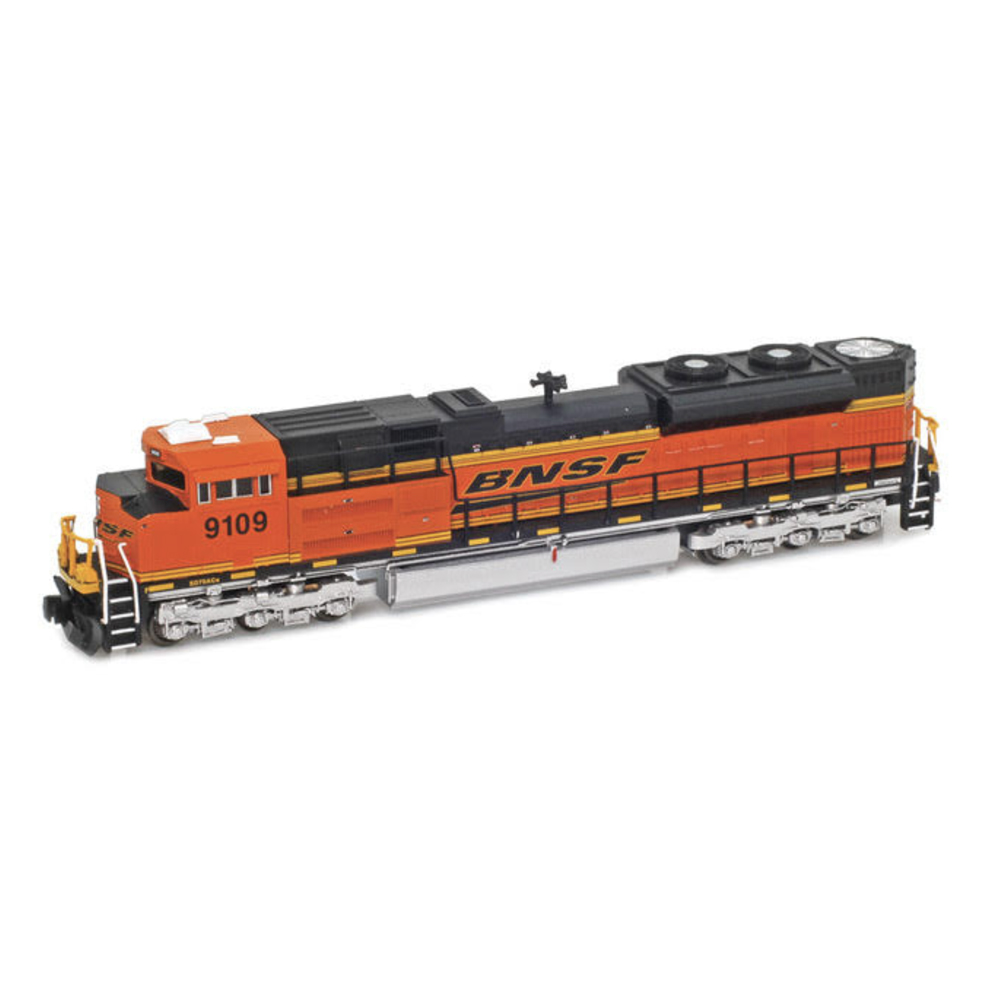This adventure started in 1947 at the early age of 5 years old, when Dad unpacked the Lionel train set he’d purchased downtown. We lived in Newark, N.J., on the top floor of a “triple decker” on the north side. My father had a good job as a supervisor at Forster Engineering Company, a firm that made large flow tubes and valves for submarines, so we lived in a great neighborhood.
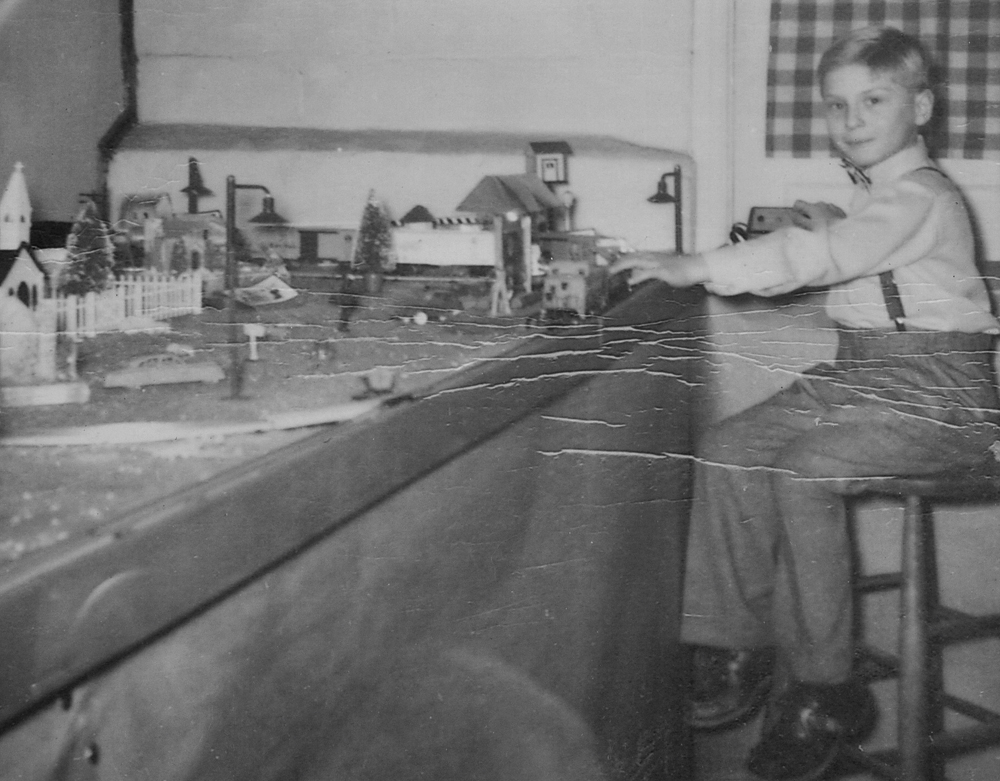
One night was the great unveiling for the train set and its place in the living room to the left of the Christmas tree. Dad picked out Lionel’s No. 1435WS that consisted of their popular No. 2025 2-6-2 “Prairie” type steam engine complete with smoke and whistle — a piece of the past I still have running today!
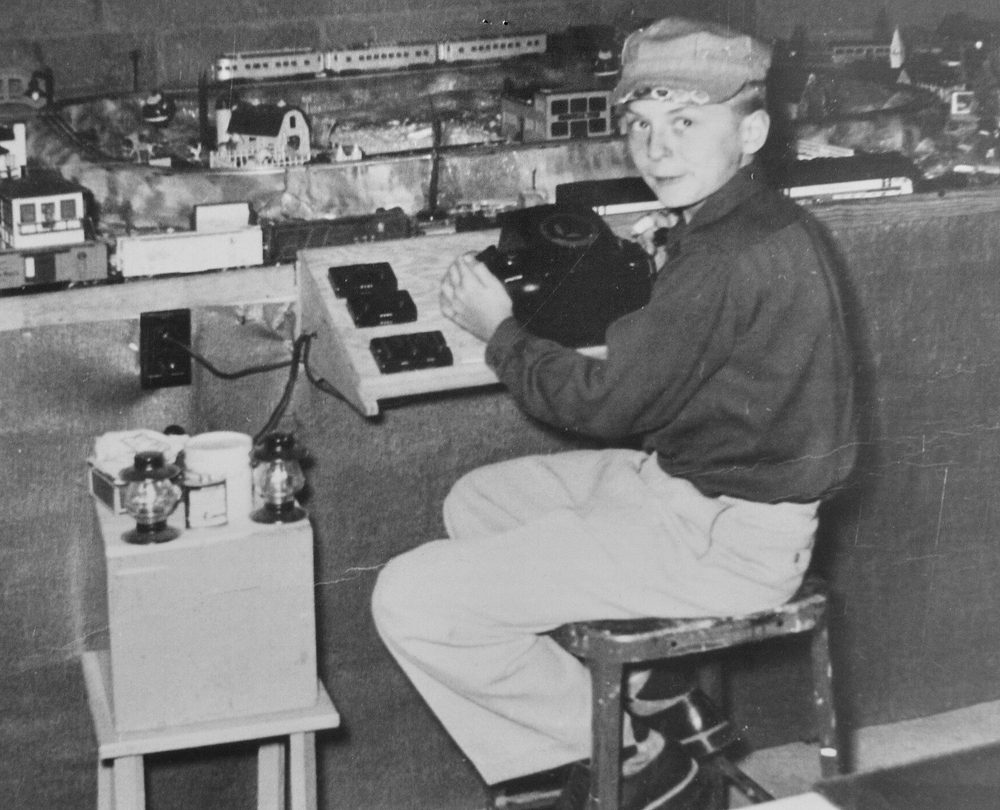
The set also contained a gondola, Baby Ruth boxcar, and a caboose. For more play value, the No. 3559 Operating Dump car and a set of manual switches completed the package.
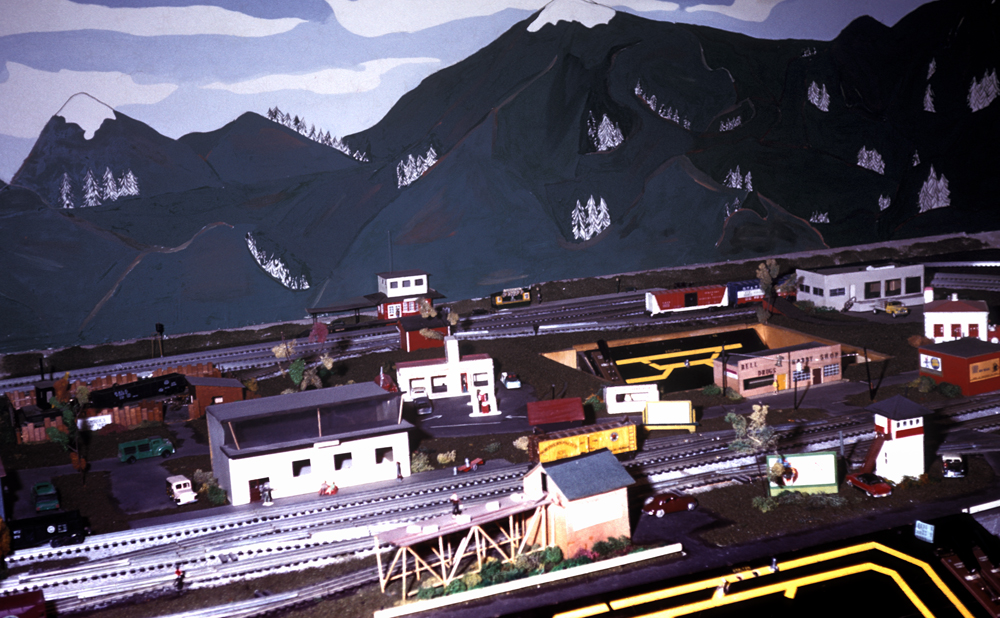
Nick Bellotti, one of the machinists from my father’s plant, came to help lift the 4 x 8 sheet of plywood up the three flights of stairs to our living room. Dad laid the track out in a rectangle, with a switch on either side, to form a passing siding where a section of the remote-controlled track was placed about center for the coal car.
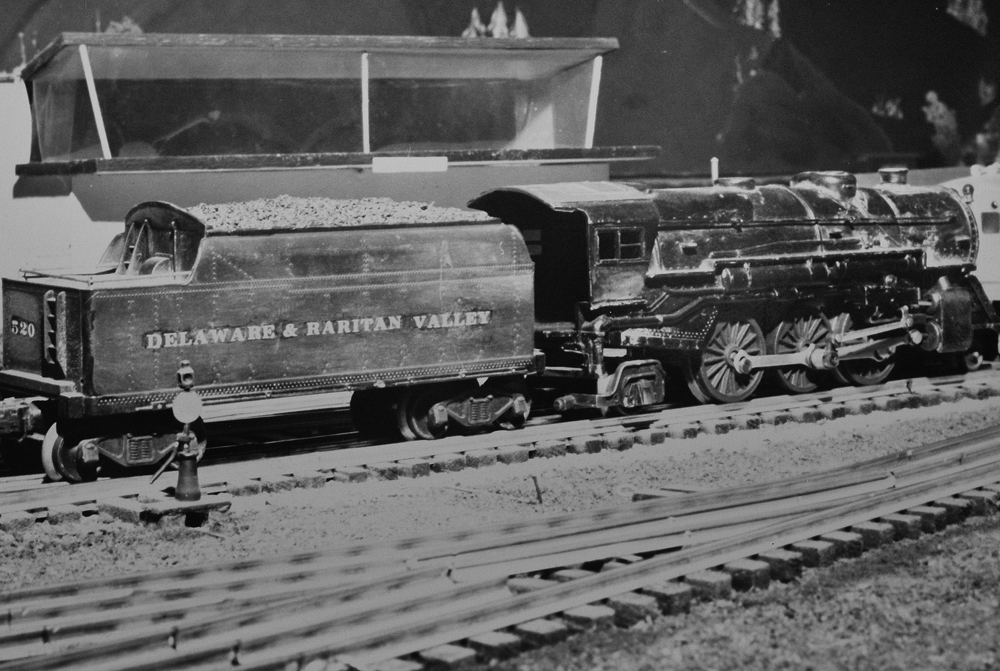
I had fun with that basic set. I’d shut off the living room light and run my train by Christmas tree lights alone, watching the headlight of the engine pierce the darkness on the back end of the layout. When no one was looking, I would turn up the throttle and watch the train go full speed around the loop. One time, it rolled onto the bed of cotton around the tree, into the manger, knocking over the plaster figures, which I quickly put back in place.
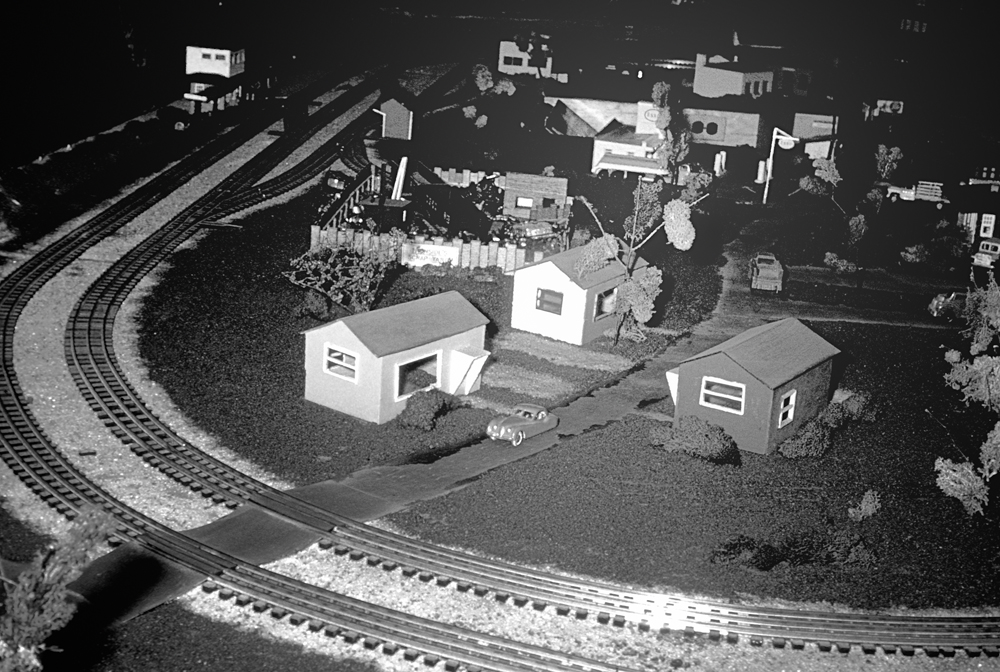
A few years later, in 1949, we moved down the street into our own house, and the layout grew to around 4 feet wide by 12 feet long. We added a few new accessories like the operating milk and cattle car. The following year was Lionel’s 50th anniversary and I tucked a new catalog in my bike basket after a trip to LaCapra’s hardware store. My father and I commandeered the other half of the finished basement and made the layout 8 x 12 feet. With a double loop, the No. 456 operating coal ramp was installed on a siding and for Christmas in 1952, I got a No. 445 switch tower to guard the crossover along with the No. 6520 searchlight car.
A ZW was under the tree, and Uncle Johnny purchased a new Lionel car to go with my collection. He was a cool uncle, calling before Christmas to ask what I would like, but I had to act surprised when he came over on Christmas eve with the goods, pretending he never called! Since my birthday is the last day of the year, money collected allowed a trip to the Train Center of America in Orange to purchase the new Lionel No. 450 signal bridge.
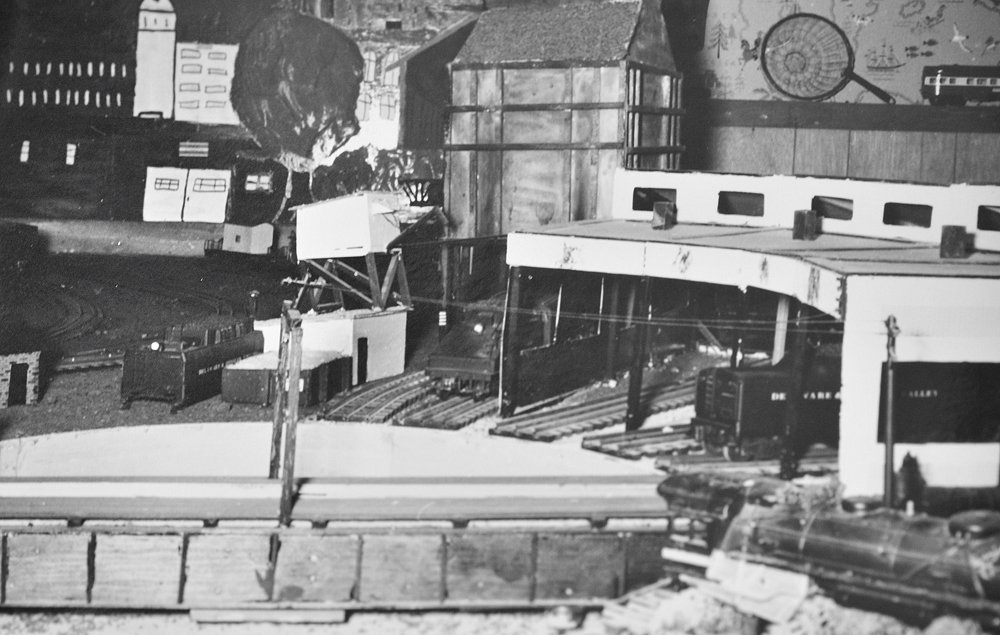
During this time, a lot was happening in the neighborhood when it came to Lionel trains. Ann Tirico got the Santa Fe SuperSpeed liner and of course, Johnny, Gregory and I were invited to only “watch” but not touch it as it made its way around an elevated figure eight in her basement. This set was on our wish lists, but all I heard when I asked for it was the usual, “we’ll see!”
It took a while, but we moved again to Scotch Plains and the “we’ll see” turned into the 3-car passenger set with that spectacular Texas Special F3 diesel leading the consist. That set was worth the wait, especially when a full basement yielded more than enough room for a much larger 8 x 16-foot layout with Lionel tubular track. An additional 4 x 8 section for a yard complete with a roundhouse, turntable, and an elevated section to showcase my Texas Special was added with this four-track yard, being my first entry into the purchase and use of some Gargraves track and switches.
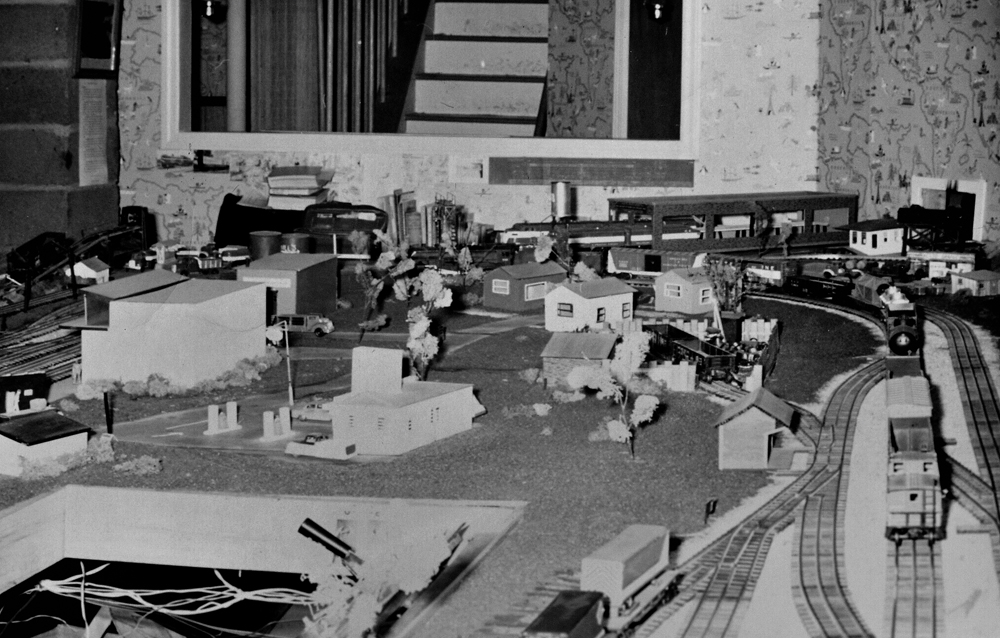
I liked that look so much that I increased the number of houses on my paper route to start collecting this type of track system for the next layout. With the purchase of the Lionel No. 736 Berkshire my intent was to rebuild the layout with sweeping 3-foot radius curves to give this big engine the room it needs.
Eventually I found a large sheet of brass and constructed a “long haul” tender for the Berkshire that made this model just stand out on the layout. I sold my entire collection of Lionel track, and slowly added new track and switches powdered by small Polaris switch machines. I added Marnold rheostats for smoother operation, removing the whistle from a few tenders and placing them under the layout for sound effects. I built my first walk around control from an idea in Model Railroader, parts, and a circular rheostat from a local electronic store.
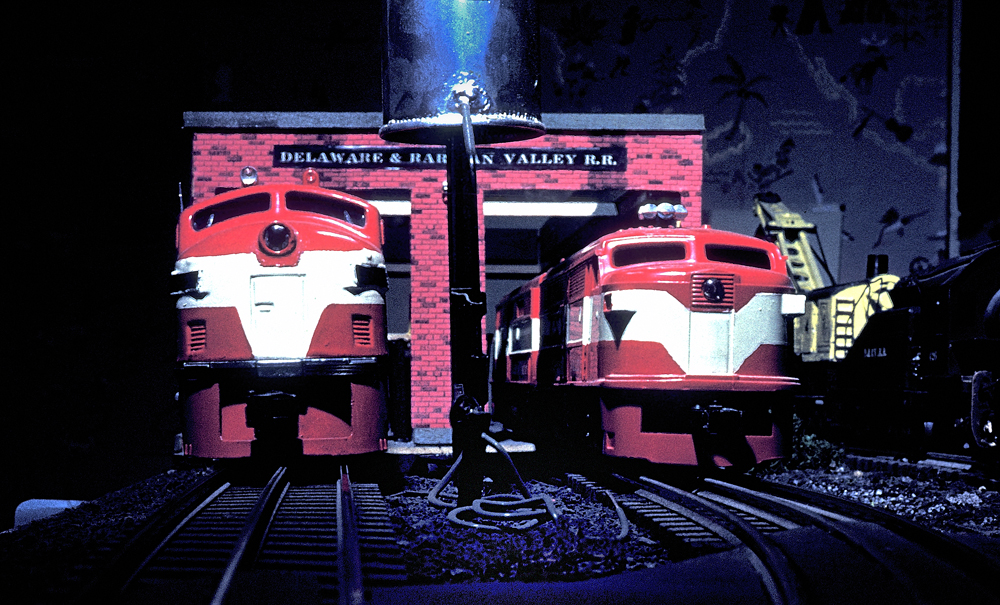
As my interest in photography grew, so did the frequency of taking pictures of the layout for record and local fan trips to record the details I could place on my layout. I needed a name for my pike. I came up with the Delaware & Raritan Valley, from names and places around my New Jersey home — a name that would last for 75 years plus.
I purchased custom-made decals from Russ Clover in California and applied them to select locomotives and rolling stock. That was my favorite layout, as my techniques in scenery and track laying were looking better as I designed passing sidings, industrial spurs, a turntable, and a formidable yard.
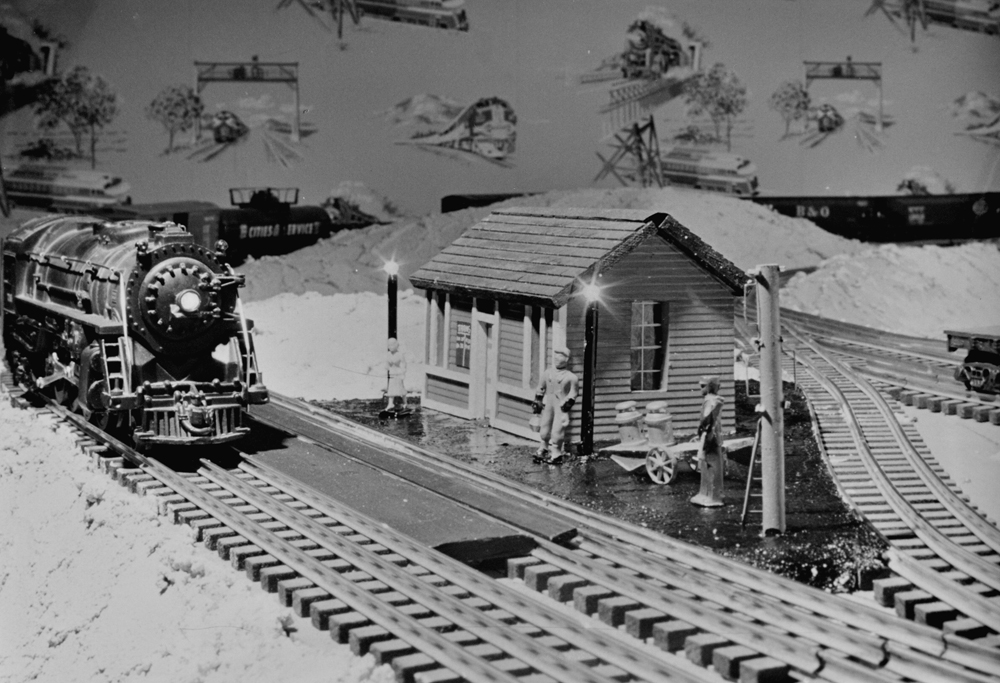
Again, the call to move came — we moved to Rhode Island during my last two years of high school. Nevertheless, to compensate for this grief I built my first open grid layout in a return loop formation with Gargraves track, switches and three control panels that I could run the entire layout from any one of the three by flipping a double throw, double pole switch.
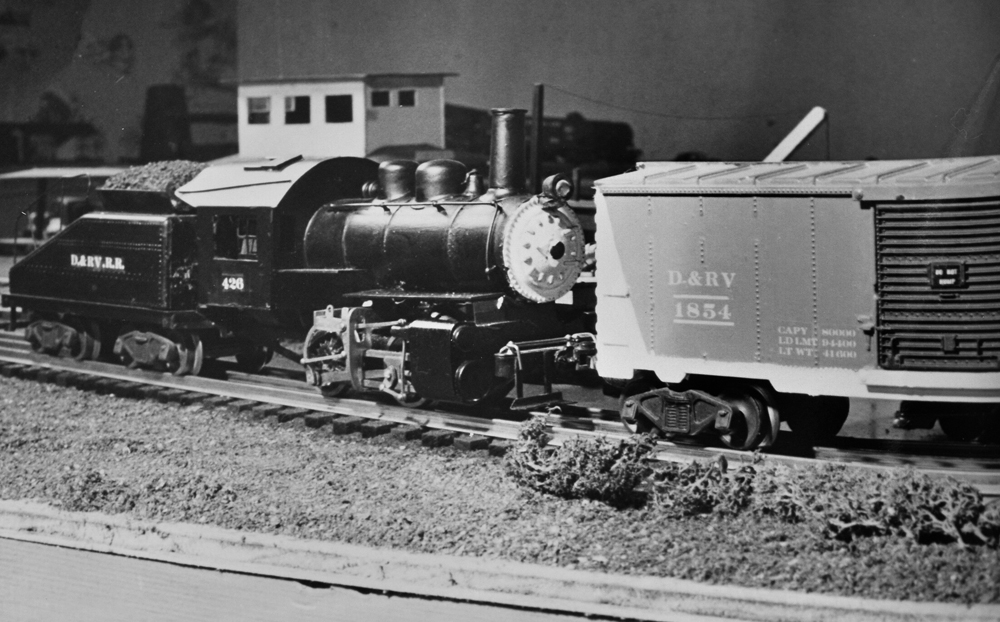
From here, I went into the Army as a helicopter crew chief, got married, had two daughters, built a small hand laid HO track layout in our apartment, purchased a house, built an around the room layout called the “RecRoom Central” that was featured in Classic Toy Trains in a room I finished in the basement.
Still, the thoughts of the perfect Lionel layout circled in my head, but since I was limited in space, the next move came with a new home some years later designed with a layout in mind. The basement was constructed with the addition of laminated carrying beams to eliminate most of the supports, giving me access to more free space without building around uprights spaced in the room. We also eliminated any windows, moved the furnace and oil tank to the edges of the basement, and added a foot to the foundation to allow space for the traditional hung ceiling and lights.
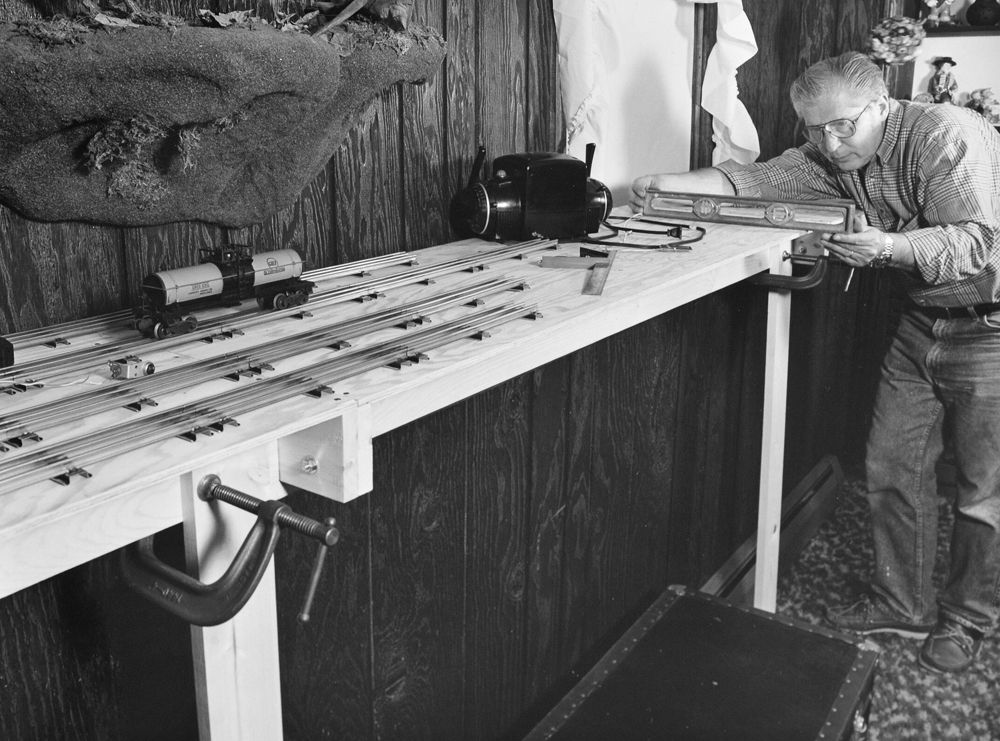
To allow for continuous running, the layout followed the pattern of the Lionel showroom layout in New York City. Designed in an “L” shape, the finished size came to 24 x 36 feet on the long side and was featured in the July 2009 issue of Classic Toy Trains.
The layout featured a double track main line with inner loops, an elevated section in the middle configured in a figure 8 with a Noma station for passengers with the No. 313 Bascule Bridge spanning a cut for all to see. Like the New York display layout, trains ran underneath, with overhead catenary past the Lionel No. 132 suburban station, only to reappear while looping around the dozen or so Lionel No. 156 station platforms positioned around the grand Lionel No. 115.
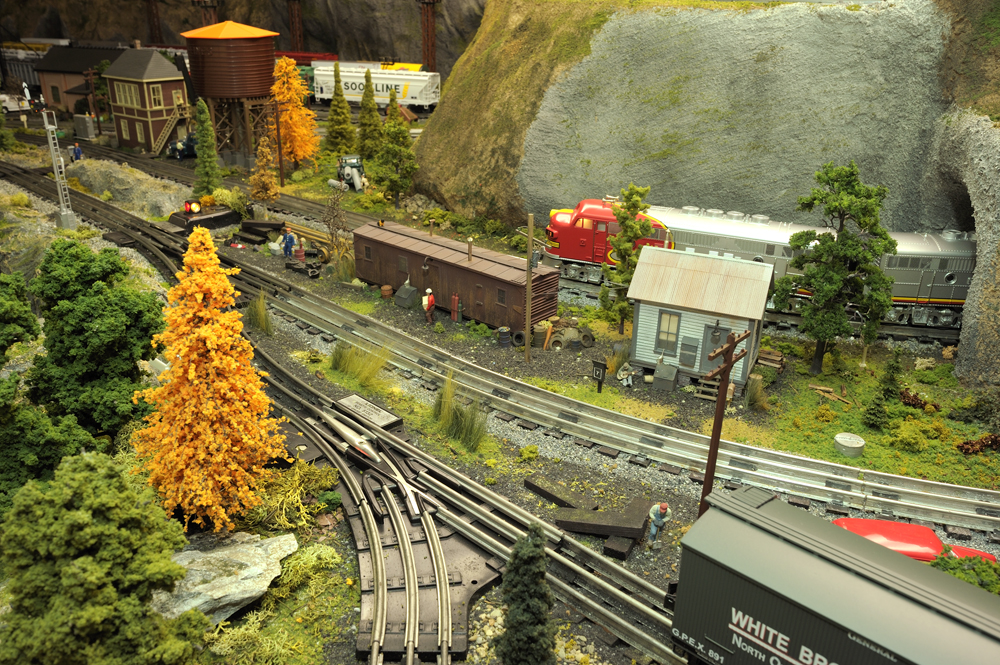
To keep the layout as close to the original, I used Lionel’s O gauge track and O-72 switches and purchased 4,800 ties that were placed under each section of track with ballast.
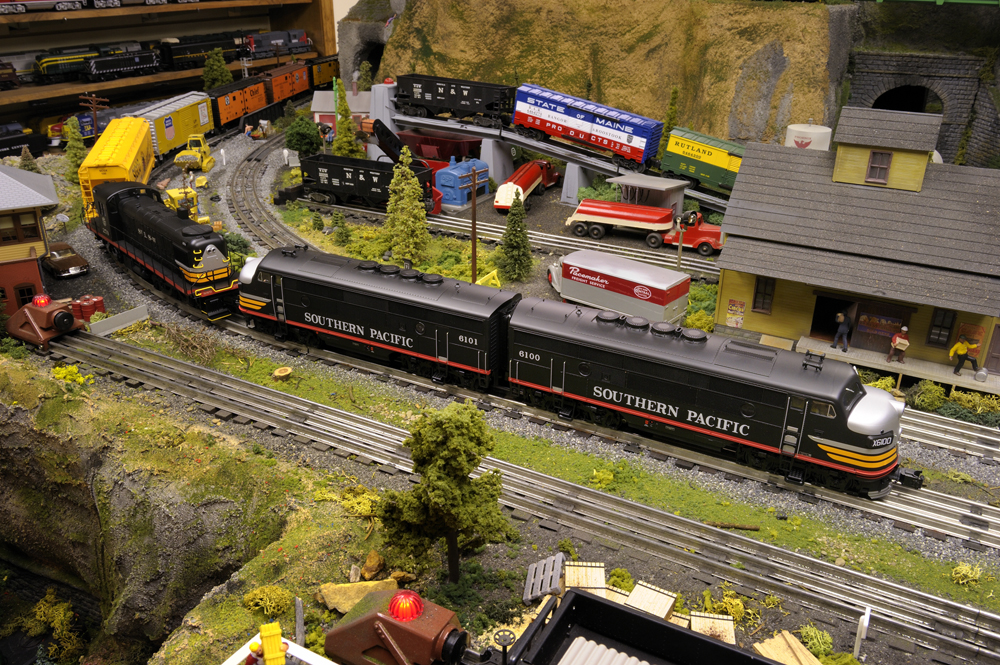
While it took a year to finish the basement, about 14 years was needed to complete this layout, which allowed time to collect just about every Lionel accessory made recalling the “good old days.” Six ZWs, two KWs, and three No. 1033 transformers powered the layout, as I like to control each train manually without the need for a special electronic handheld device. Dimmers were installed to cut the lights down for nighttime running and a separate heating and air-conditioning zone made this room a pleasure to be in.
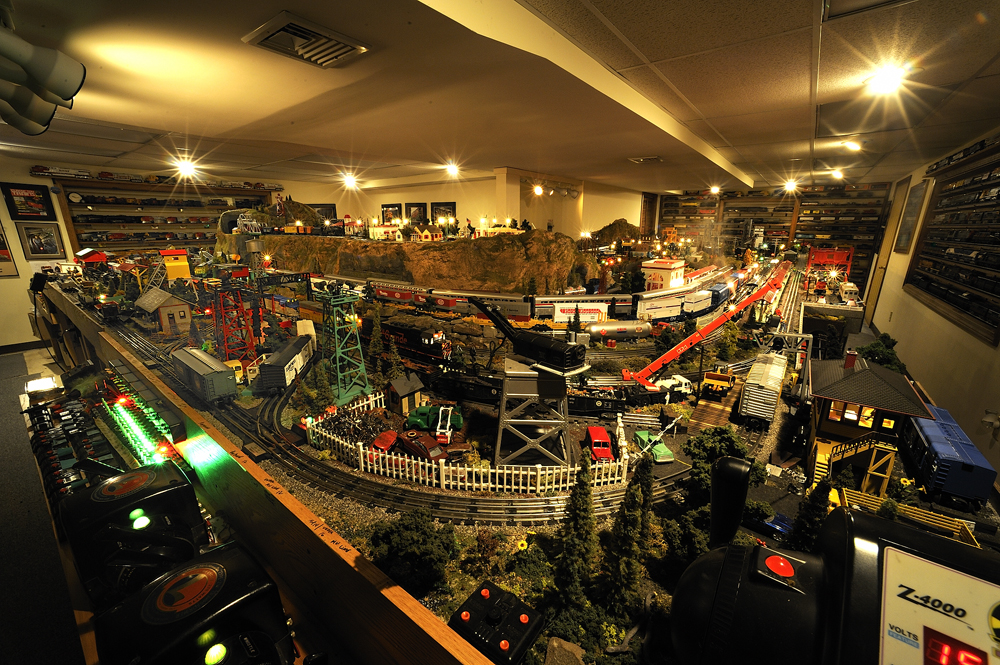
I turned 80 in 2023. The time had come to sell the collection rather than have it be a burden on my wife someday. We were lucky to sell the whole layout in one piece.
I’m building a smaller layout now, four panels about 2 feet by 8 feet, joining them into a square with an opening in the center much like a donut. I will use Gargraves track and Ross Custom switches perhaps with a few of those very sexy curved turnouts allowing for plenty of room for details, short trains, and a mixed train here and there from the small cache of equipment left over from the sale. I will use the engine terminal and the Appleton yard spliced into the new layout.
Any feelings over eight decades in the hobby? I have been more than fortunate to witness the golden age of Lionel trains in the 1940s and ‘50s, motive power, trains and those fantastic wish books or accessories that some will never see, handle, hear the sounds or smell the ozone while they were working. We all should be thankful we can enjoy a hobby some will never get to be part of, but a lot of kids should be, even in this modern world. Regrets? None. It is still the greatest hobby in the world!
Visit Stan’s website at http://outdoorphotographics.com
Watch a video of Stan’s previous layout: https://www.trains.com/vid/toytrains/tours-visits/stan-trzoniecs-o-gauge-layout/
Learn more about Stan in this article.








